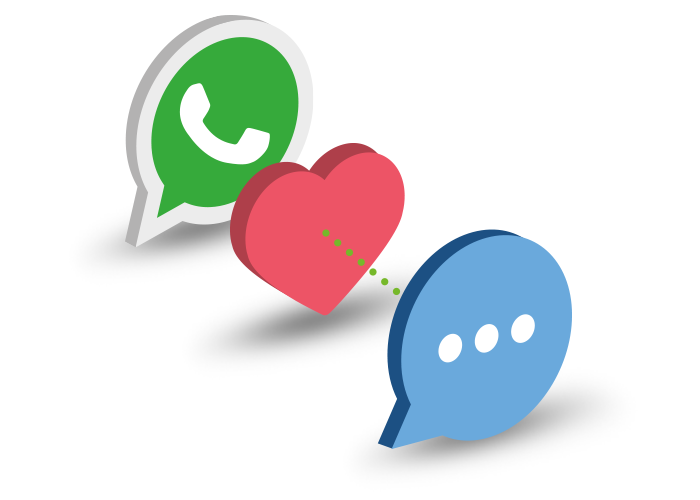How would you like to keep all your customer service conversations in one place? With the WhosOn WhatsApp integration, you can.
The need for omnichannel service is increasingly mainstream. Customers are getting in touch via an expanding variety of formats – from call, to email, to social media, to web chat, to SMS, and more. And one of the newest, and ever-more popular, methods of contacting a business today is via WhatsApp.
So, how can businesses and contact centres manage all the messages pouring in from their new WhatsApp business account? Without, that is, forcing customer service agents to navigate from app to app?
One way to help keep on top of all those WhatsApp messages (whilst still manning your other chat channels) is via WhosOn’s WhatsApp integration feature. Here’s a closer look.
What is WhatsApp integration?
Our WhatsApp integration is a WhosOn feature that allows you to combine your WhatsApp service and your live web chat service.
That is, it enables the receipt and response of WhatsApp messages within the same client that your service reps use to handle live chat queries.
So, when customers reach out through the messaging platform, your agents can reply from the WhosOn chat client that’s already sat on their desktop.
WhosOn’s WhatsApp integration works by allowing you to connect your business WhatsApp account to WhosOn. (Via an inbuilt integration – no tricky coding work needed.)
So, you simply enable the feature. Then, you’ll receive any WhatsApp messages your customers send in the WhosOn client — alongside standard chat requests, and any other connected third-party message sources. (I.e., Facebook Messenger.)
Your service agents can then reply and engage with the customer by typing into the WhosOn chat client. WhosOn will receive the WhatsApp messages, let the agent type out their reply, and push their response back into WhatsApp. All from one consolidated console.
So, there’s no disruptive channel switching.

Who uses it?
WhatsApp integration means that customers get to contact your chat team through WhatsApp. But it’s your chat agents themselves who most benefit from this integration feature.
(After all, the customer sending a WhatsApp message has no idea what’s happening behind the scenes – they see only their standard WhatsApp chat.)
Your agents, meanwhile, are the ones taking advantage of the integration. They get smooth, streamlined inbound queries. They can receive WhatsApp messages and use their customer service chat skills to reply from one screen.
Your live chat agents can handle WhatsApp messages just as they would any other chat. And, importantly, that includes the use of other WhosOn features to ensure excellent service.
Why is it useful?
Your customer service agents have multiple channels to juggle. And every swap from one to another represents disruption. It breaks focus, wastes time, and adds tedium.
With WhosOn’s WhatsApp integration, there’s one less channel to disrupt their day. Chat agents can stay focused on engaging with customers — instead of constantly switching focus as they swap programs and screens. This makes for an easier time for your team, and smoother, faster service for the customers reaching out through WhatsApp.
Plus, the integration can help to improve the customer experience delivered through WhatsApp. With WhatsApp connected to WhosOn, agents gain access to smart WhosOn features to support and elevate their service while using WhatsApp.
And, better yet, the integration also allows you to incorporate WhatsApp queries into your chat reports. So, you get a consolidated picture of what your customers are reaching out to chat about. (And the service they’re receiving.)
In short, WhatsApp integration is useful because it helps you get one step closer to bringing all your chats into one place — regardless of the channel used for them.
WhatsApp integration… and more
Having more channels for your customers to choose from is great — but it can be hard to manage when all those channels sit in silos. Integrations make things easier to handle. They put everything in one place, so teams can focus on service, not channel swapping.
WhatsApp integration is just one of the integrations features that WhosOn has to offer.
Why not try it out yourself, and explore further, with a free trial of WhosOn?


